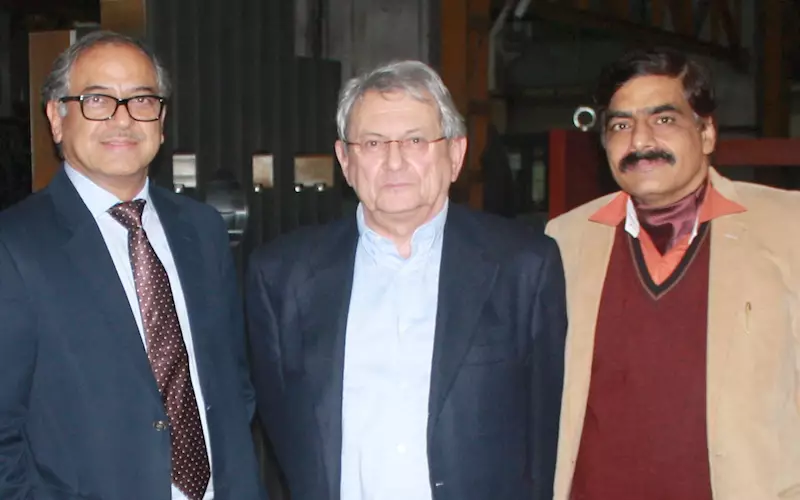Uflex, Comiflex join hands to manufacture CI flexo press
The engineering division of Noida-based flexible packaging giant Uflex has started manufacturing a central impression, eight-colour, 1300mm web width CI flexo printing press in its Noida facility. The printing speed of the machine will be 400m/min.
15 Feb 2017 | By Rahul Kumar
The development is a result of Uflex joining hands with Italy-based Comiflex to manufacture gearless CI flexo machines under a technology transfer agreement signed during Drupa 2016 where Uflex exhibited.
Ajay Tandon, president and CEO, engineering and new product development, Uflex, said, “This is first time we are manufacturing CI flexo presses. Our first customer will be the converting division of Uflex.”
Tandon said the machine will be ready by the end of April. “Hopefully, it will be functional by the middle of the year,” Tandon said. “Once our converting division is satisfied with the machine, we will go the market.”
Tandon said while for now the CI drum and other critical parts are being imported from Italy, the company’s dependency on imported parts will be gradually reduced. “We will manufacture 80% components in India and rest 20% critical parts will be imported. Later, we will export components to Comiflex as well,” he said.
Gianfranco Nespoli of Comiflex said, “It was a mutual alliance because we have the technology and Uflex has production infrastructure. Uflex is our first and only overseas machine manufacturing partner.”
Nespoli said the market is shifting from gravure to CI flexo. In Europe, he said around 90% of packaging products were printed on gravure. Now, around 80% of products are printed on flexo. “Rotogravure is being used for very long-run jobs like pasta packaging,” he said.
Presently, around 100 Comiflex CI flexo presses are running around the world.
Tandon said India is a potential market for CI flexo. “In the last few years, the percentage growth of CI flexo is higher than gravure in India. India has very low per capita consumption of polythene/plastic. China is many times more and the USA is many times more than China. Consumption of plastic packaging in India is bound to increase,” he said.
He said in the last decade, quality of CI flexo printing has increased tremendously. “We are a beginner in CI flexo machine manufacturing. We are expecting to produce three to four machines in first year. Each and every sale of CI flexo printing press is a project and strike rate is very low, so being a manufacturer, you have to keep going,” Tandon said.
He added that in the segment, India is way behind though it is catching fast. Germans, Italians and Turkish are best. Japan, Taiwan and Korea are good too.
Tandon said first Uflex will sell the machines in India before going global through its network in more than 100 countries. “All the presses will be customised with 75% basic structure. Specifications are always different so it is risky to keep a machine ready. First the order and specifications are frozen then the machine manufacturing starts,” he said.
Right now, Uflex has two models on the basis of speed – Uflexo Elisa and Valle. The only difference between the two models is speed, Elisa can convert at the speed of 400m/min and Valle can run on 300m/min. Number of printing units is optional from six to ten and printing width range is similar from 800 to 1,600mm. The width can range from 600 to 3,500mm.
“The general web width in the Indian market ranges from 1,300 to 1,500mm and the standard is 1,350mm. The machines will be able to convert 300 to 400 tonnes of laminate per month in a round-the-clock operation. As it is being manufactured in India, our machines will be around 40% more economic,” Tandon said.
In high-end CI flexo, there are around 25 imported presses in India. At mid-level, Chinese and Taiwanese machines rule the roost. At low-level Indian manufacturers supply machines, but most of them are stack type. In 2016, around eight CI flexo presses were imported.











 See All
See All